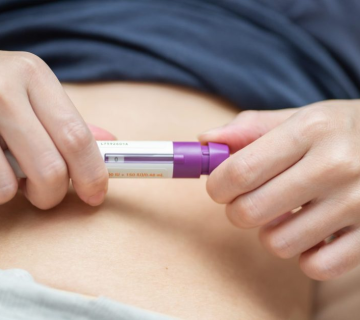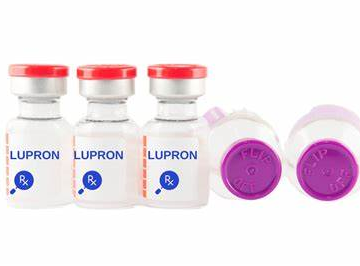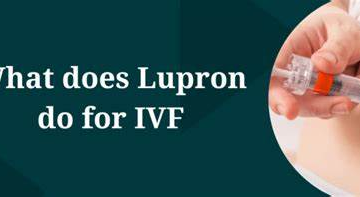
Starting a family is a dream for many couples, and today, lesbian couples have more paths to parenthood than ever before. One of the most popular and effective options is in vitro fertilization (IVF). Whether you’re just beginning to explore your options or you’re ready to take the next step, this guide is here to help. We’ve dug deep into the top resources online, analyzed what they cover, and added fresh insights, practical tips, and the latest research to give you the most complete picture possible. This isn’t just another blog post—it’s your go-to resource for understanding IVF, making informed decisions, and feeling supported every step of the way.
In this article, we’ll cover everything from the basics of IVF to the emotional ups and downs, costs, legal stuff, and even how to pick the right sperm donor. We’ll break it all down with clear explanations, real-life examples, and actionable advice you won’t find everywhere else. Let’s get started!
Understanding Fertility Treatment Options
When it comes to building a family, lesbian couples can choose from several fertility treatments. The big ones are intrauterine insemination (IUI), traditional IVF, and a special type called reciprocal IVF (also known as the ROPA method). Each has its own process, benefits, and challenges. Let’s walk through them so you can figure out what might work best for you and your partner.
What is IUI?
IUI, or intrauterine insemination, is like the “starter pack” of fertility treatments. It’s simple, less invasive, and usually the first thing couples try.
Here’s how it goes:
-
- You pick donor sperm (more on that later).
-
- The sperm gets prepped in a lab to make sure it’s the best of the best.
-
- A doctor uses a thin tube to place the sperm directly into the uterus of the partner who’ll carry the baby, timed with ovulation.
Think of it like giving nature a little nudge. It’s perfect if you’re both healthy and there are no big fertility hurdles.
Pros of IUI:
✔️ Less expensive than IVF
✔️ Quick and easy—no surgery needed
✔️ Can work with or without fertility meds
Cons of IUI:
❌ Lower success rates than IVF (around 10-20% per try)
❌ Might take a few cycles to work
❌ Only one partner is part of the biological process
What is IVF?
IVF steps things up a notch. It’s a process where eggs are fertilized outside the body and then placed into the uterus. For lesbian couples, it’s super flexible depending on what you want.
Here’s the rundown:
-
- One partner takes hormone shots to grow lots of eggs.
-
- Those eggs are collected in a quick procedure.
-
- They’re mixed with donor sperm in a lab to make embryos.
-
- The embryos are transferred to the uterus of the partner who’ll carry the pregnancy.
IVF is great if IUI doesn’t work, or if there are issues like low egg count or blocked tubes. It’s also the foundation for reciprocal IVF, which we’ll get to next.
Pros of IVF:
✔️ Higher success rates (up to 50% for women under 35)
✔️ You can test embryos for genetic issues
✔️ Opens the door to both partners being involved
Cons of IVF:
❌ Costs more and takes longer
❌ Involves shots and a small surgery
❌ Might need more than one round
What is Reciprocal IVF (ROPA Method)?
Reciprocal IVF is the teamwork option. One partner gives the eggs (the genetic mom), and the other carries the baby (the gestational mom). It’s also called the ROPA method, which stands for Reception of Oocytes from Partner.
Here’s how it works:
-
- Partner A gets hormone shots and has her eggs collected.
-
- Those eggs are fertilized with donor sperm.
-
- The embryos go into Partner B’s uterus, who carries the pregnancy.
It’s like splitting the baby-making roles so you both have a biological connection to your child. Pretty cool, right?
Pros of Reciprocal IVF:
✔️ Both partners play a biological role
✔️ Shares the physical and emotional experience
✔️ Feels empowering for many couples
Cons of Reciprocal IVF:
❌ Pricier than regular IVF
❌ Both partners need to be healthy for their part
❌ Can get tricky legally (we’ll cover that later)
Dr. Orion Nightingale, a fertility expert, says, “Reciprocal IVF is a game-changer for lesbian couples. It’s not just about biology—it’s about building a family together in a way that feels meaningful to both partners.”
The Fertility Journey: Step by Step
Ready to dive in? The fertility journey has a few key stages, no matter which treatment you pick. We’ll walk you through each one with tips to make it smoother.
Initial Consultation and Fertility Testing
Your first stop is a fertility clinic. You’ll sit down with a doctor to talk about your health, goals, and any worries. They’ll probably suggest some tests to check things out.
Common tests include:
-
- Blood work: Checks hormone levels like AMH (egg supply) and FSH (ovary function).
-
- Ultrasound: Looks at your ovaries and uterus.
-
- HSG (for IUI): Makes sure your tubes are clear.
These tests are like a roadmap—they show your doctor the best route to take. For example, if one partner has great eggs but the other has a stronger uterus, reciprocal IVF might be perfect.
Tip: Bring a notebook to jot down questions and answers. It’s a lot to take in!
Choosing a Sperm Donor
Since lesbian couples need donor sperm, this is a big decision. You’ve got two main options: a sperm bank (anonymous donor) or someone you know (known donor).
Things to think about:
-
- Looks: Do you want a donor who resembles one of you?
-
- Health: Check their medical history for stuff like heart disease or genetic conditions.
-
- Personality: Some banks share details like hobbies or talents.
-
- Contact: Open donors let your kid reach out later; anonymous ones don’t.
If you go with a known donor, like a friend, get a lawyer involved. You’ll need a contract to make sure they don’t have legal rights to the child.
Tip: Take your time with this. It’s not just about biology—it’s about what feels right for your family.
The IVF Process for Lesbian Couples
Here’s the IVF timeline in simple steps:
-
- Stimulation: Hormone shots for 8-12 days to grow eggs.
-
- Monitoring: Regular ultrasounds and blood tests to watch progress.
-
- Egg Retrieval: A 20-minute procedure to collect the eggs.
-
- Fertilization: Eggs meet sperm in the lab to make embryos.
-
- Transfer: Embryos go into the uterus (usually 3-5 days later).
-
- Waiting: A pregnancy test after 9-14 days.
For reciprocal IVF, Partner A does steps 1-3, and Partner B does step 5. It’s a tag-team effort!
Tip: Ask your clinic for a calendar. It helps you stay on top of appointments and meds.
Emotional and Physical Preparation
This journey can be a wild ride—exciting one day, stressful the next. Here’s how to get ready:
-
- Talk it out: Share your hopes and fears with your partner.
-
- Stay healthy: Eat well, move your body, and try to relax (yoga, anyone?).
-
- Build a team: Friends, family, or a counselor can lift you up.
Therapist Ophelia, who works with LGBTQ+ families, says, “Fertility treatment tests your strength, but it also shows how resilient you are. Don’t be afraid to ask for help—it’s a sign of courage.”
Costs and Insurance Coverage
Let’s talk money. Fertility treatments aren’t cheap, but there are ways to manage the costs.
How Much Does IVF Cost?
IVF usually runs between $10,000 and $25,000 per cycle. Here’s what affects the price:
-
- Where you live: Big cities tend to cost more.
-
- Clinic: Fancy ones charge extra.
-
- Extras: Things like embryo testing or freezing add up.
Reciprocal IVF is in the same ballpark, plus $500-$1,500 per vial of donor sperm. IUI is cheaper—around $300-$1,000 per try—but success rates are lower, so you might need more attempts.
Table: Cost Comparison
| Treatment | Cost Per Cycle | Success Rate (Under 35) |
|---|---|---|
| IUI | $300-$1,000 | 10-20% |
| IVF | $10,000-$25,000 | 40-50% |
| Reciprocal IVF | $12,000-$25,000 | 40-50% |
Insurance and State Mandates
Insurance is a mixed bag. Some states—like New York or Colorado—require coverage for fertility treatments, and they’re starting to include same-sex couples. Others don’t, leaving you to pay out of pocket.
Check your policy and state laws. Look for words like “infertility” or “ART” (assisted reproductive technology). If it’s unclear, call your insurance company and ask.
Tip: Keep records of every call—names, dates, what they said. It can help if you need to fight for coverage.
Financial Planning and Support
No insurance? No problem. Try these:
-
- Payment plans: Many clinics let you spread out the cost.
-
- Grants: Groups like Baby Quest offer help for LGBTQ+ couples.
-
- Crowdfunding: Sites like GoFundMe can rally your community.
-
- Start small: IUI might be a budget-friendly first step.
Tip: Save receipts—some costs might be tax-deductible.
Success Rates and Clinical Outcomes
You’re investing a lot, so what are the odds? Let’s look at the numbers and what they mean for you.
What to Expect in Terms of Success
Success depends on age, health, and a little luck. Here’s the scoop:
-
- Under 35: 40-50% chance per IVF cycle.
-
- 35-40: 30-40% chance.
-
- Over 40: 10-20% chance.
Reciprocal IVF matches these rates, assuming both partners are good candidates. IUI is lower—10-20% per cycle—but it’s less of a commitment.
New research from 2023 shows lesbian couples using IVF often have success rates equal to or better than heterosexual couples, thanks to fewer underlying fertility issues.
Tip: Ask your clinic for their specific success rates—they can vary!
Perinatal Outcomes and Risks
IVF babies are usually healthy, but there are some risks:
-
- Twins or more: Transferring multiple embryos ups this chance.
-
- Early delivery: IVF pregnancies might come a bit sooner.
-
- Low birth weight: Slightly more common with IVF.
A 2022 study found reciprocal IVF pregnancies have outcomes similar to regular IVF—about 90% of babies are born healthy. Risks drop if you transfer just one embryo, which many doctors recommend now.
Dr. Caspian Sterling, a fertility doctor, notes, “IVF is safer than ever, but it’s not risk-free. A good clinic will guide you to minimize complications and keep you and your baby healthy.”
Legal and Ethical Considerations
Fertility treatment comes with some legal and ethical twists, especially for lesbian couples. Let’s break it down.
Navigating Legal Issues
-
- Donor Contracts: With a known donor, get a lawyer to draft an agreement. It protects you and clarifies the donor’s role (usually none).
-
- Parental Rights: Some states don’t automatically recognize both partners as parents. A second-parent adoption might be needed.
-
- State Laws: Places like California are super friendly to LGBTQ+ families; others, less so. Check your local rules.
Tip: Spend the money on a lawyer up front—it saves headaches later.
Ethical Dilemmas and Societal Norms
You might face big questions:
-
- Donor identity: Open or anonymous? How will your kid feel?
-
- Biology vs. bonding: Does it matter who’s genetically linked?
-
- Judgment: Some folks still don’t get same-sex parenting.
Talk these out with your partner. There’s no “right” answer—just what’s right for you.
Example: Jen and Mia chose an open donor so their son could learn about his roots if he wanted. It felt honest to them.
Emotional Support and Community
This journey isn’t just physical—it’s emotional too. Here’s how to stay strong.
Coping with the Emotional Rollercoaster
-
- Feel it all: Hope, stress, joy—it’s normal to bounce around.
-
- Team up: Lean on your partner; you’re in this together.
-
- Take breaks: Step away if it gets too heavy.
Tip: Try journaling—it’s like unloading your brain onto paper.
Finding Support Groups and Resources
You’re not alone! Check out:
-
- Online groups: Gay Parents To Be has forums full of advice.
-
- Local meetups: Look for LGBTQ+ family events near you.
-
- Books: “The Ultimate Guide to Pregnancy for Lesbians” by Rachel Pepper is a classic.
Example: Sarah joined a Zoom group and met a couple who became her “fertility buddies.” They texted daily during the wait.
Conclusion
IVF opens doors for lesbian couples to build the families they’ve always wanted. From choosing between IUI, IVF, or reciprocal IVF to navigating costs and emotions, you’ve got options and support. It’s a big journey, but with the right info and a solid team—your partner, doctors, friends—you can make it happen.
Ready to start? Reach out to a fertility clinic that gets LGBTQ+ families. Take it one step at a time, and know that every shot, test, and tear brings you closer to your dream.
Interactive Content
FAQs
Q: How do I decide between IUI and IVF?
A: Look at your age, health, and budget. IUI is cheaper and easier; IVF has better odds. Your doctor can help you pick.
Q: Is reciprocal IVF worth the extra cost?
A: If you both want a biological role, absolutely. It’s about connection, not just money.
Q: What if we can’t afford IVF?
A: Start with IUI, apply for grants, or talk to your clinic about discounts. There’s always a way.
Your Fertility Checklist
✔️ Book a consult with a fertility doc
✔️ Get tested (both partners)
✔️ Pick a donor and sign agreements
✔️ Plan your budget and insurance
✔️ Join a support group
Share Your Story
Have you started your IVF journey? What’s been your biggest win or challenge? Drop it in the comments or email us—we’d love to hear from you and cheer you on!




No comment